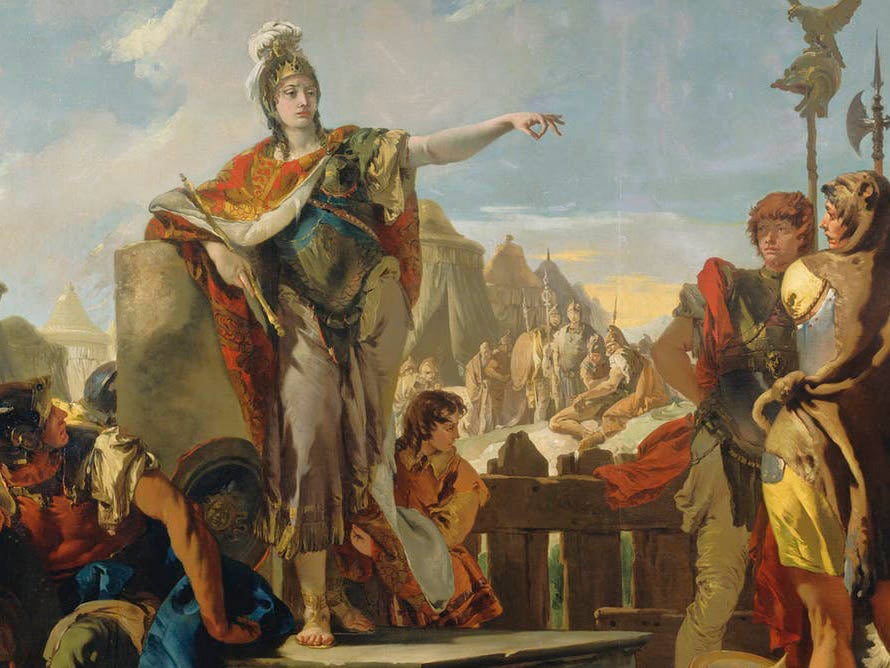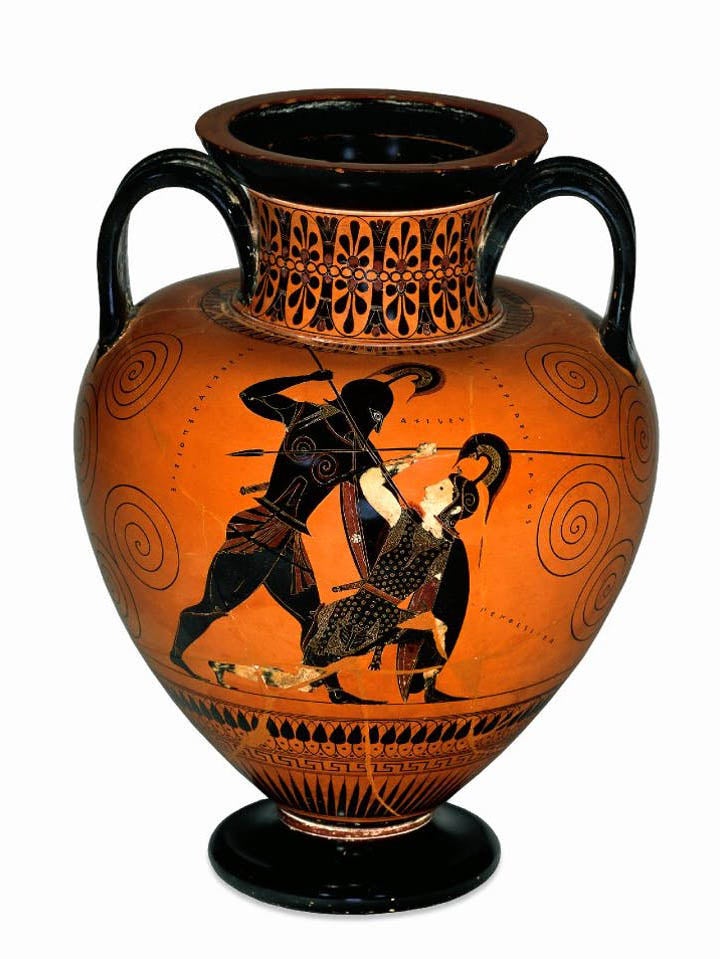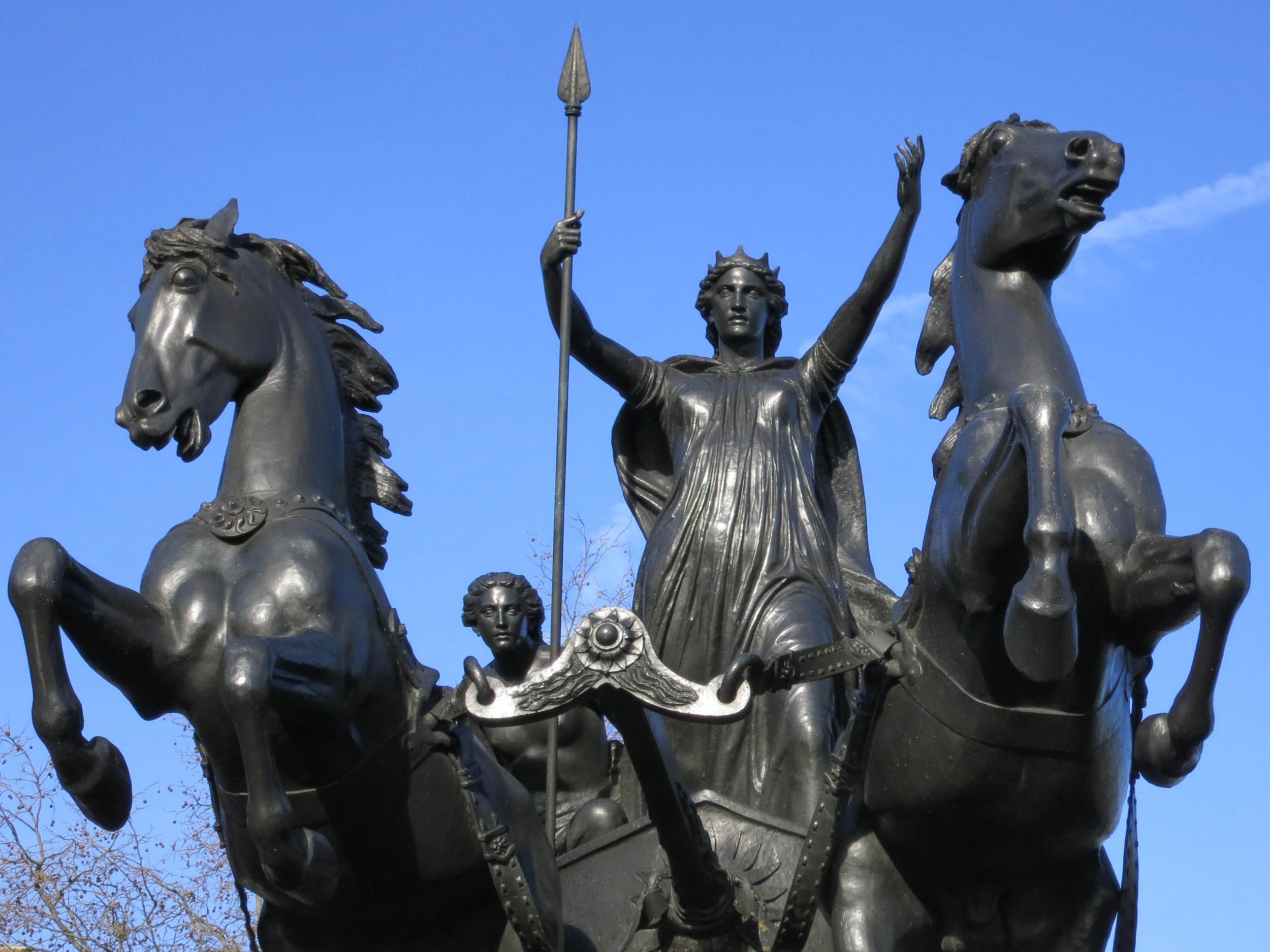The ancient world was full of warrior women – and men were terrified of them
When Romans encountered women in battle, it created quite a stir

Your support helps us to tell the story
From reproductive rights to climate change to Big Tech, The Independent is on the ground when the story is developing. Whether it's investigating the financials of Elon Musk's pro-Trump PAC or producing our latest documentary, 'The A Word', which shines a light on the American women fighting for reproductive rights, we know how important it is to parse out the facts from the messaging.
At such a critical moment in US history, we need reporters on the ground. Your donation allows us to keep sending journalists to speak to both sides of the story.
The Independent is trusted by Americans across the entire political spectrum. And unlike many other quality news outlets, we choose not to lock Americans out of our reporting and analysis with paywalls. We believe quality journalism should be available to everyone, paid for by those who can afford it.
Your support makes all the difference.One of the great things about computer games is that anything is possible in the almost endless array of situations on offer, whether in realistic or fantasy worlds. But it has been reported that gamers are boycotting Total War: Rome II on the grounds of historical accuracy after developers introduced women generals, apparently to please “feminists”.
But while it’s true that the Romans would not have had female soldiers in their armies, they certainly encountered women in battle – and when they did it created quite a stir. The historians of the ancient world recorded tales of impressive female military commanders from across many cultures.
In the ancient world, when women did go to war, it was usually reported as a complete reversal of the natural order of things. The ancients believed, as Homer’s Iliad claimed, that “war will be men’s business”. In the eyes of the (male) contemporary historians, female warriors were aberrations and often remembered as embodiments of the mythical one-breasted Amazons. These legendary warriors were usually portrayed as slightly unhinged women who behaved unnaturally, and symbolised – to ancient men at least – a world turned on its head.
Yet the star-crossed tale of Achilles and the Amazon warrior queen Penthesilea fascinated the ancient chroniclers. Penthesilea, who led her troops to the support of Troy, was the mythical daughter of Ares, the god of war. She was killed in combat by Achilles who then mourned her, falling in love with the warrior queen for her beauty and valour. The moment is captured on a famous sixth-century BC vase now in the British Museum and was represented in text and imagery across classical Greece and Rome.
When Artemisia of Caria commanded ships on the side of Persians at the Battle of Salamis in 480BC she fought so well that the Persian king Xerxes exclaimed: “My men have become women and my women men.” It was a world turned upside down according to the Greek historian Herodotus – but the soldiers who willingly followed Artemisia into battle could not have thought that way. She must have been skilled and competent and inspired those she commanded.

Cleopatra’s warlike family
In the Hellenistic period – which is generally held to be the period between the death of Alexander the Great in 323BC and the conquest of Egypt by Rome in 31BC – women with real power and agency appear in numerous kingdoms across the eastern Mediterranean. These extraordinary and influential queens often held the keys to power, had personal armies and would not hesitate to go to war.
They were the mothers, daughters and sisters of the kings and generals who succeeded Alexander the Great. The fabulous Cleopatra VII – best known for her affair with Julius Caesar and marriage to Mark Anthony – was the last of a long line of impressive Egyptian queens who went to war. The role of fighting queen had already been well established by her namesakes including Cleopatra Thea and Cleopatra IV.
The indomitable Cleopatra Thea held her own in the ruthless world of Hellenistic dynastic chaos as the queen to three Hellenistic kings, while Cleopatra IV, when divorced from one husband, took a personal army with her to her next husband as dowry.
Palmyra’s warrior queen
Centuries later, Zenobia, queen of Palmyra, took advantage of a period of upheaval in the Middle East in the late third century AD to carve a kingdom for herself and her city – and it was no coincidence that she connected her ancestry back to the fighting traditions of the Hellenistic Cleopatras.
When Zenobia led her armies she did so in the name of her son and took on the Roman emperor Aurelian to protect her city, her region and the interests of her realm. According to the Greek historian Zosimus, Zenobia commanded her troops in battle and people from across the region flocked to her side. Ancient writers were scandalised at the idea of a woman dominating Roman power but she remained a legend across the Middle East in classical and early Islamic histories.

Boudicca: Britain’s greatest warrior queen
But the most legendary of the female warriors from antiquity has to be the Iceni queen Boudicca. When Boudicca led her rebellion against the Roman occupation of her land in around AD60, the historian Cassius Dio remembered it thus: “All this ruin was brought upon the Romans by a woman, the fact which in itself caused them the greatest shame.”
There is a visceral image that accompanies her name, with long red hair flowing behind (although Dio says she was blonde) as she charges forth in her war chariot. The ancient writers speak of her terrorising the Roman occupants of newly conquered Britannia with her tall stature and fierce eyes. Boudicca was viewed by the Roman men who recorded her history as a woman wronged and hell-bent on vengeance.
Tacitus, our best source for Boudicca’s rebellion, claims that the Celtic women of the British Isles and Ireland frequently fought alongside their men. And when wars were about the survival of a kingdom, a family or a home and children, women would fight if they had to, especially when the only other option was slavery or death.
So when women took to the field in battle in antiquity it was both astonishing and terrifying for the men who recorded the events and shameful to lose to them. It almost always occurred at times of political chaos and dynastic upheaval, when society’s structures loosened and women had to, and could, stand up for themselves. Ancient men did not like to think about having to fight women or having women fight – and it still seems to irk some people today.
Eve MacDonald is a lecturer in ancient history at Cardiff University. This article first appeared on The Conversation (theconversation.com)
Join our commenting forum
Join thought-provoking conversations, follow other Independent readers and see their replies
Comments